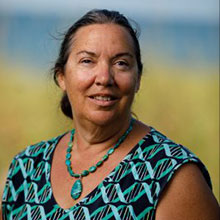
Demers, Nora (Ph.D.)
Nora Demers is an Associate Professor of Biology at Florida Gulf Coast University.
She teaches undergraduate courses in Biology, interdisciplinary science and interdisciplinary
studies. Her scholarship focus is on endocrine disruption. Professional memberships
include the American Association for the Advancement of Sciences, (AAAS), National
Sciences Teachers Association (NSTA), Society for Freshwater Scientists, the Gopher
Tortoise Council and Sigma Xi.
Dr. Demers's work has been published in Fish and Shellfish Immunology, Journal of
College Science Teaching, Council on Undergraduate Research Quarterly, and International
Journal of E-Learning.
To reach more about Dr. Demers's research and courses, please visit her faculty page.
-
Education
Toggle Education -
Research and Teaching Interests
Toggle Research and Teaching Interests -
Courses Offered
Toggle Courses Offered -
Conference Presentations
Toggle Conference Presentations -
Grants & Awards
Toggle Grants & Awards
